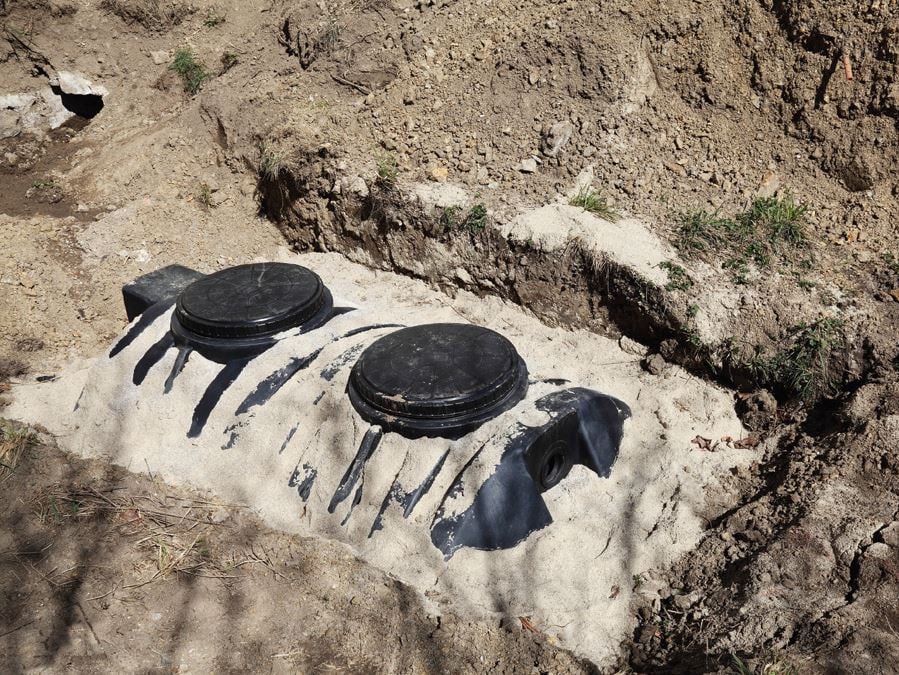February 1, 2017
Septic Tanks: Why they’re important, and how to choose the right kind
Septic tanks may not be great conversation starters at dinner parties and other social gatherings, but they are undeniably an important part of every establishment.
Every time you turn on a tap, flush a toilet, or do your laundry, your septic system comes into play. Water (and the waste they carry) need to travel out of your residential and commercial building, and into the ever-reliable septic tanks. Everything is simply more sanitary and less messy when you have a septic system that works exactly the way it is supposed to.
How poly septic tank systems work
Septic systems are underground wastewater treatment structures that treat wastewater from household plumbing produced by bathrooms, drains, and laundry. The septic tank is part of the septic system, which also includes a drain field or a soil absorption field. The septic tank’s primary function is to “digest” or break down organic matter and separate those that float, such as grease and other oily materials, from those that sink (because they are made from solid materials).
Soil-based systems discharge the liquid from the septic tank into a series of perforated pipes buried in a leach field, leaching chambers, or other special units that are designed to gradually release the effluent (or the liquid) into the soil or surface water.
A healthy septic tank is a well-balanced ecosystem that allows good bacteria to thrive in the right amounts to digest waste and treat the effluent water. A healthy septic tank typically forms three layers – a layer of fats called scum, which, as mentioned earlier, floats on the surface of the liquid waste; a layer of clear liquid waste, which is the effluent, and finally, the solid layer, which is the sludge, which, if you can remember, is the one that sinks to the bottom. The scum is responsible for preventing odours from escaping and stops air from entering. The treated effluent then flows out of the tank through an outlet pipe as new waste water enters.
.jpg?width=1024&name=poly%20septics%20(2).jpg)
To explain the process step-by-step:
- Water runs out of your house from one main drainage pipe, and into a septic tank
- The septic tank, which is a buried, water-tight container typically made of concrete or polyethylene, holds wastewater long enough to allow solids to settle down to the bottom, forming sludge, while the oil and grease float to the top in the form of scum. The septic tank has compartments and at-shaped outlet that prevent the sludge and scum from leaving the tank and into the drainfield area.
- The liquid wastewater exits the tank and into the drain field. A note about the drain field – it is a shallow, covered excavation that is made in unsaturated oil. Pre-treated wastewater gets discharged through piping onto surfaces that allow wastewater to filter though the soil.
The soil then treats and disperses wastewater as it seeps through the soil, ultimately getting discharged to groundwater. Overloaded drain fields tend to flood, causing sewage to flow to the ground surface or create clogs in toilets and sinks.
- The wastewater then seeps into the soil, removing harmful bacteria, viruses, and nutrients. Colifrom bacteria, which inhabits the intestines of humans or other warm-blooded animals and an indicator of human fecal contamination, is also removed.
Detecting a malfunctioning septic system
Now that you know how a septic tank system works, you should also know when something is amiss. It is a huge misconception that a foul odour is your only indication that your septic system is malfunctioning. You should also watch out for the following signs:
- Wastewater backing up on to the household drains
- Bright green, spongy grass on the drain field, even when the weather is hot and dry
- Pooling water or muddy soil around your septic system or in your basement
- Strong, often unpleasant odour around the septic tank and drain fied
Choosing the right septic tank
Whether it is for a residential building or a commercial building, choosing the right septic tank can be quite tricky, what with all the factors you have to take into consideration. First, you have to look at the average water consumption in your home. This includes all functions, from bathing, to cooking, watering the lawn, and all other tasks that requires flushing water down the drain.
Choosing a septic tank design that can hold twice your average daily usage is a good place to start. Anything smaller might not work properly in the long run and might cause you some expensive problems.
Another approach would be to consider the size of your home. The logic behind this is that a larger home can accommodate more people, which means that a larger home consumes more water than a small one. Big homes will of course require large septic tanks. A four-bedroom home would require a larger tank than one that only has one bedroom. Adding one extra bedroom as a buffer is a good idea so that there is an allowance for when a household is entertaining guests for an extended period of time.
Another factor you have to look into is the design. Some people focus too much on the brand name, and Coerco is one of the top providers of poly septic tank systems. Made with the sturdiest and highest quality materials in the market, you are assured that your septic tank will stand the test of time and function exactly the way it is supposed to.
You also have to take into consideration the type of soil your septic tank will be installed to. Locations with coarse sand soils or gravel will require a pressure-type septic type. These are better equipped to handle underground sinkage. You also have to select the pump you will use – you may choose from centrifugal or turbine pumps. Generally, you can get more uses out of turbine pumps because they are designed to cycle hundreds of thousands of times.
Consider as well the amount of space you have available for septic tank installation. Most tanks are installed in the front or back yards, depending on where there is more space. You must have ample room for both the tank and drain field.
Your local municipality may require that the septic tank size of establishments within its boundary have a certain capacity. If this is the case, then you should go for the tank size required by law, so you won’t have problems in the future, should you decide to sell your property. You may also be prohibited from installing the tank within a certain distance from your property line, so you should understand and know exactly what needs to be done to comply with local standards.
Leach drains – what are they, exactly?
.jpg?width=1024&name=poly%20leach%20drain%20(5).jpg)
Leach drains are tube-like structures made of concrete or plastic and buried in the ground. They have holes on the sides and work by removing contaminants and impurities from the liquid that comes out of the water tank. Its width and length depends on the size of the leach drain being used, the amount of liquid waste to be disposed of, the type of soil around it, and how it is built.
Feeling a little overwhelmed? We wouldn't be surprised as there is a lot to take in.
Contact us for enquiries or get things going with our guide below!







Comments